Tag: Economics
-

WichitaLiberty.TV: Dr. Tom G. Palmer and the causes of wealth
Dr. Tom G. Palmer of Atlas Network joins Bob Weeks to explain why the usual approach to foreign aid isn’t working, and what Atlas Network is doing to change the lives of the poor across the world.
-
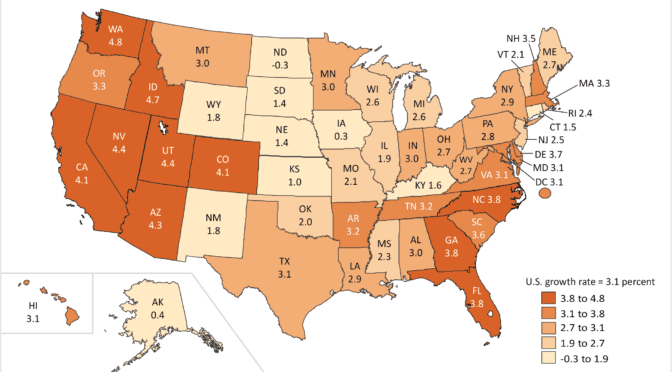
Kansas personal income
Personal income in Kansas rose in 2017 at a rate one-third that of the nation.
-
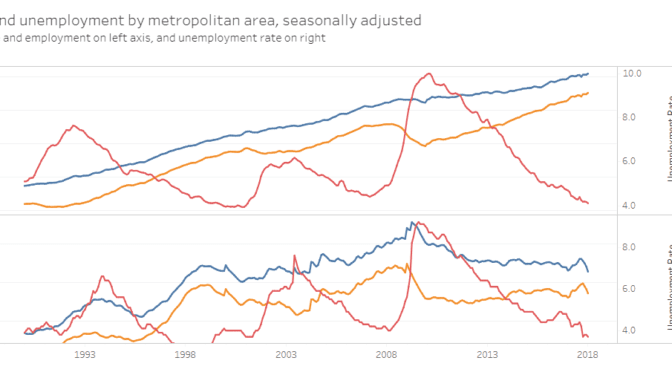
Employment in metropolitan areas
An interactive visualization of labor force, employment, and unemployment rate for all metropolitan areas in the United States.
-

Wichita employment down, year-over-year
At a time Wichita leaders promote forward momentum in the Wichita economy, year-over-year employment has fallen.
-
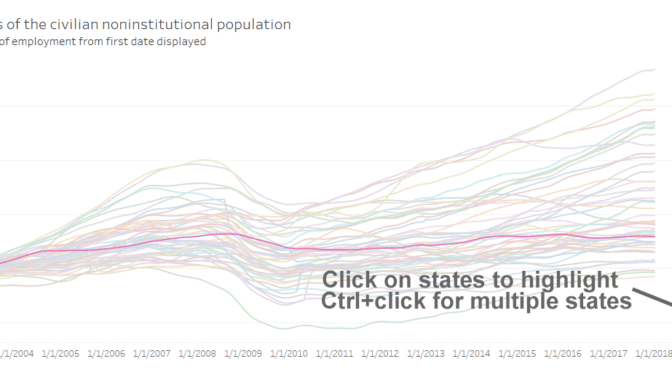
Employment in the states
An interactive visualization of the civilian labor force, employment, and unemployment, for each state.
-
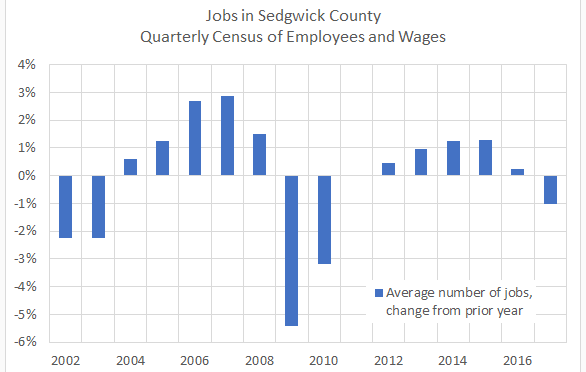
Sedgwick County’s David Dennis on economic development
Following the Wichita Mayor, the Chair of the Sedgwick County Commission speaks on economic development.
-
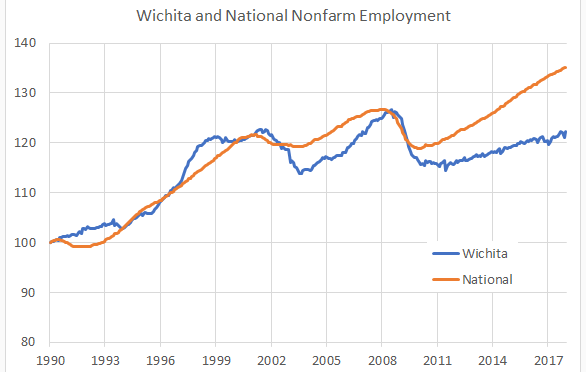
Mayor Longwell’s pep talk
A column written by Wichita Mayor Jeff Longwell ignores the reality of Wichita’s economy.
-

Growing the Wichita economy
Wichita leaders are proud of our region’s economic growth. Here are the numbers.
-

WichitaLiberty.TV: What Was Really the Matter with the Kansas Tax Plan
Dave Trabert of Kansas Policy Institute joins Bob and Karl to discuss his new book What Was Really the Matter with the Kansas Tax Plan –- The Undoing of a Good Idea.
-

What Was Really the Matter with the Kansas Tax Plan
Tax relief opponents have repeatedly pointed to the 2012 Kansas tax plan as their primary example of why tax cuts do not work. But, other states like North Carolina, Indiana, and Tennessee contemporaneously, and successfully, cut taxes. What was different about the Kansas experience?
-
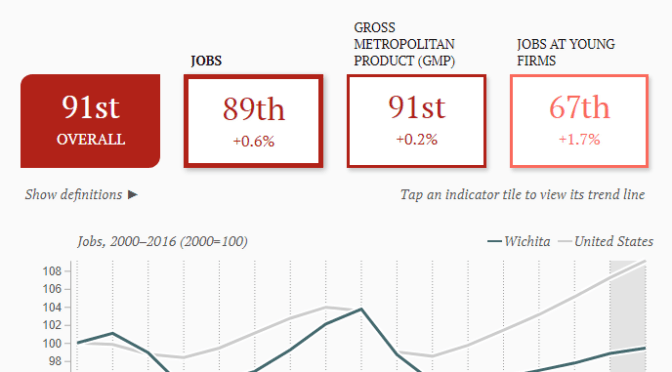
Metro Monitor evaluates the Wichita economy
Metro Monitor from Brookings Institution ranks metropolitan areas on economic performance. How does Wichita fare?
-
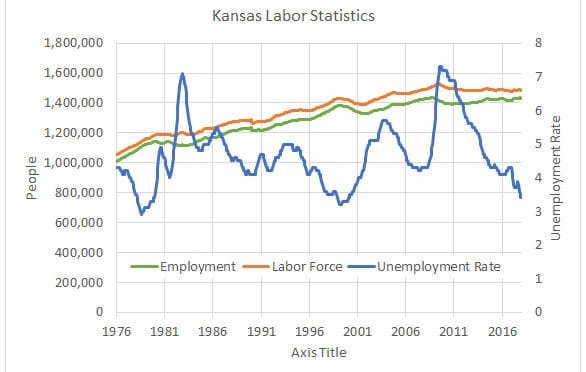
Unemployment in Kansas
New Kansas Governor Jeff Colyer proudly cites the low Kansas unemployment rate, but there is more to the story.